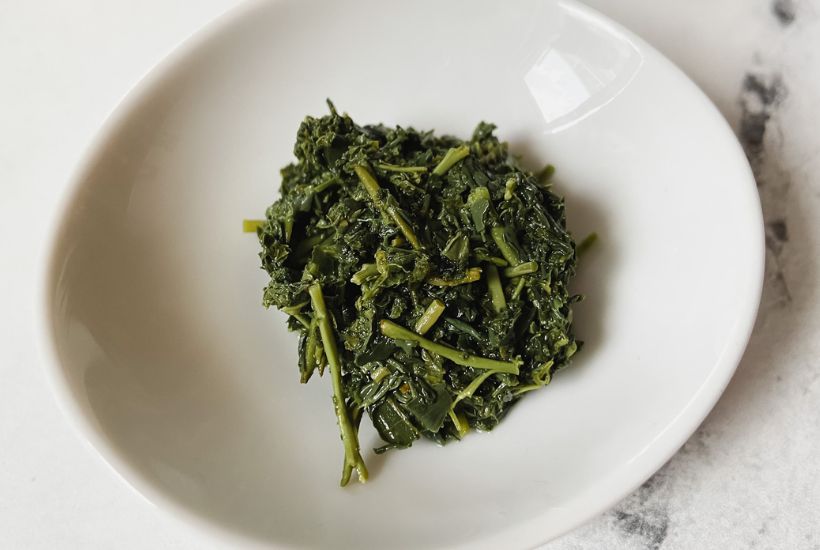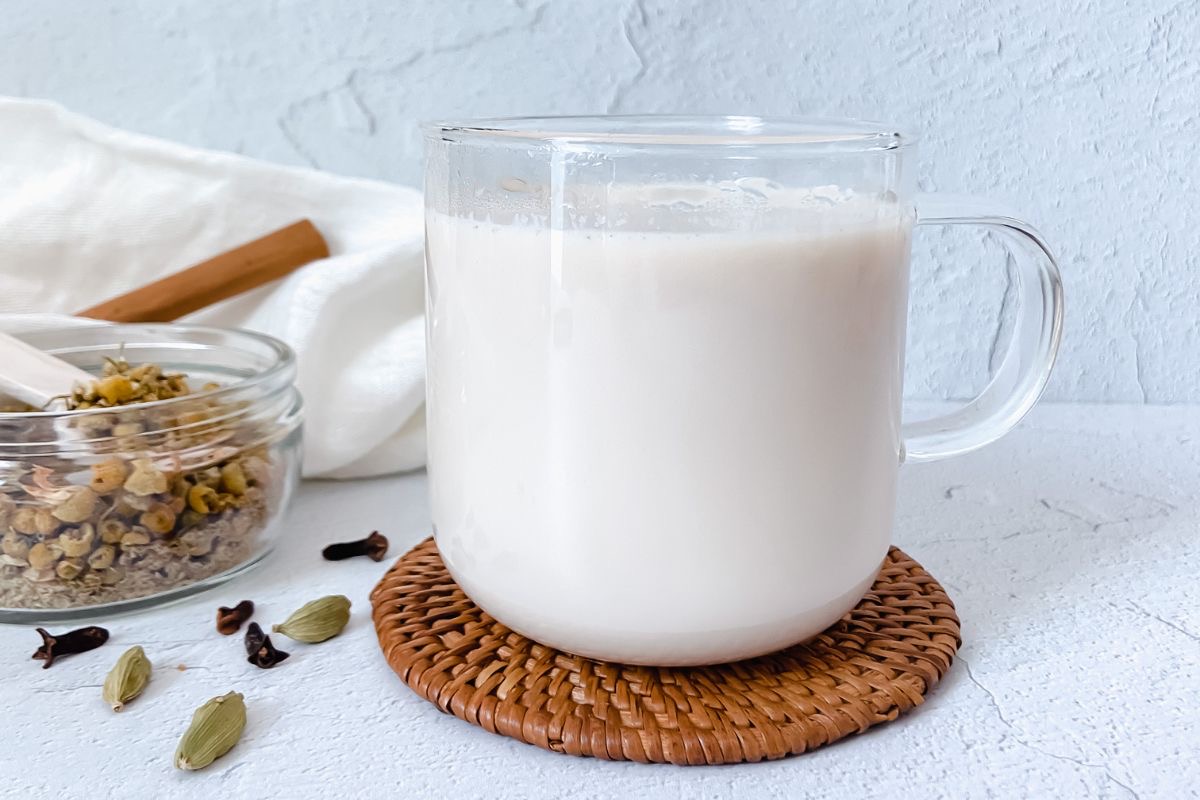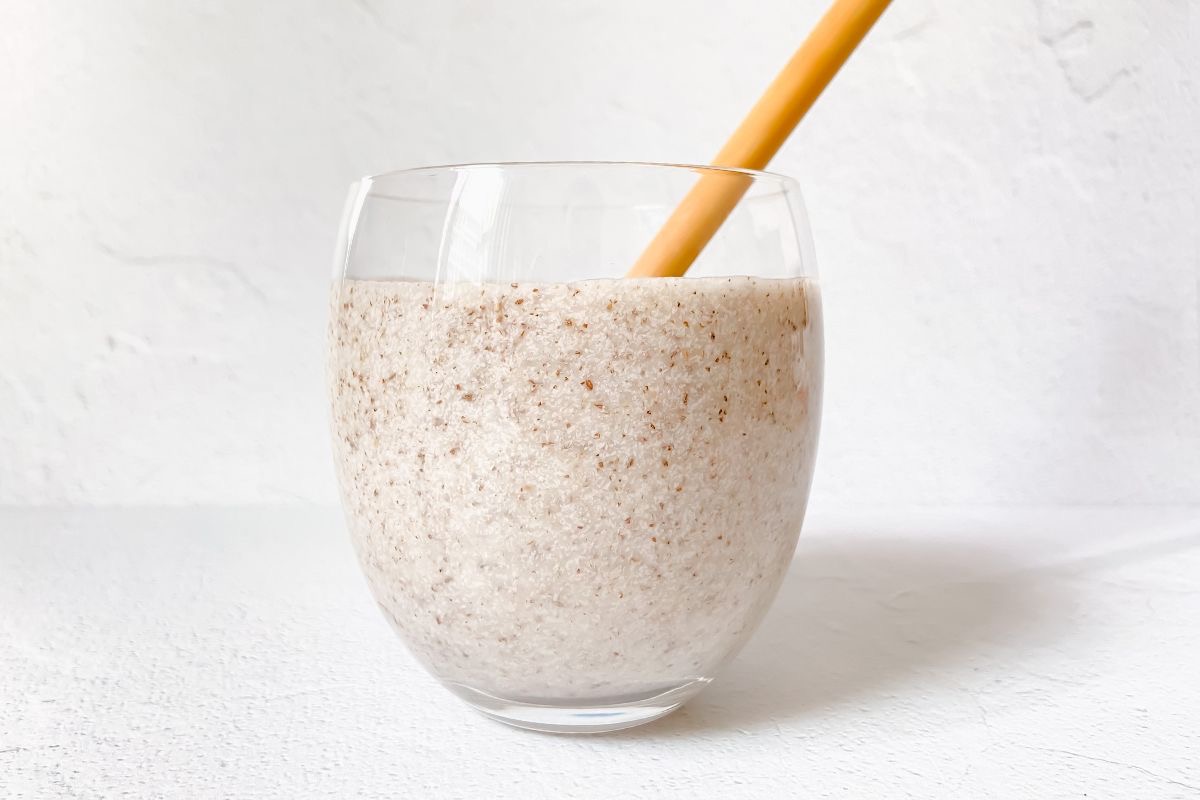Japanese Teas that are Caffeine-Free
Traditional Japanese teas that aren’t green tea (and don’t contain any caffeine)

Japan is famous for its tea culture, and some Japanese tea sorts have become quite popular worldwide, like matcha.
But did you know there is more than green tea in Japan?
In this article we’ll talk about other traditional teas from Japan that don’t have any caffeine. These “teas” aren’t real tea since they don’t derive from the tea plant (Camellia sinensis), but they are nevertheless delicious!
So, whether you are looking for naturally caffeine-free tea in Japan or you are just curious about new types of tea that you can drink at any time of day, you’ll definitely find something for you here.
Let’s start with our guide to caffeine-free Japanese teas and how to make them.
This post may contain affiliate links. This means, if you make a purchase through one of these links, I may earn an affiliate commission at no extra cost to you.
Mugicha (barley tea)
This is by far the most popular caffeine-free tea in Japan.
You will find barley tea in every supermarket, convenience store and restaurant in Japan.
It is not uncommon for people of any age (even toddlers) to drink this tea instead of water!
What is barley tea?

As you can guess from the name, mugicha (麦茶, translated as barley tea) is an infusion made from barley (Hordeum vulgare) kernels.
This roasted-grains infusion is especially popular during summertime because it is refreshing and thirst-quenching.
However, it can also be served warm.
What does mugicha taste like?
Since the barley is roasted, the beverage has a pleasant toasty taste.
With a hint of bitterness, some people say it tastes like mild coffee (without the caffeine kick) or even like beer (but of course, without the bubbles or alcohol).
How to prepare barley tea
You can use both barley tea bags or loose roasted barley kernels.
But don’t worry if you can’t find barley tea: I’ll also share my trick to enjoy it without doing groceries in an Asian store!
To make warm barley tea
Steeping method:
This is the quickest way to preparing mugicha.
- Cover 1-2 Tbsp. (10-20 gr.) whole roasted barley kernels with freshly boiled hot water (if using a barley tea bag, follow instructions of the package – usually, you may need 1 tea bag for every liter of water)
- Steep for 5-15 minutes, depending of how strong and dark you want it

Brewing method
You can brew the ”tea” to get more tea from the same amount of kernels.
- Boil around 20 gr. barley kernels in 1.5 liter of water
- Remove from heat after 2-3 minute
- Strain

For cold barley tea
The easiest way to make cold mugicha is cold brewing it:
- Use roughly 2 Tbsp (20 gr.) barley tea for 1 liter water
- Let it steep for 2 hours in water at room temperature or in the refrigerator
- Remove tea kernels and enjoy!
A trick to make barley tea without barley tea
Since barley tea is very popular drink in the whole East Asian region, it’s quite easy to find barley tea bags in any grocery store that sells Asian products.
But if you don’t have barely tea or barley kernels, don’t sweat over it: you can even make an instant barley tea with soluble barley coffee.
Just mix a teaspoon barley coffee for every 2 cups of water.
The result is quite similar to authentic barley tea!
Azuki-cha
Azuki-cha (あずき茶 or 小豆茶) is red bean “tea”, a caffeine-free infusion made from roasted azuki or adzuki beans.
These reddish brown small beans are quite beloved in Japanese cuisine, for example as the main ingredient of anko, a chocolate-like paste that is very common in Japanese traditional sweets.

How does azukicha taste?
Azuki-cha has a mild, naturally sweet taste, with a hint of nuttiness that makes it a very pleasant drink for most people.
How to prepare a cup of azukicha

- Steep around 5 gr. (1 full teaspoon) roasted adzuki in hot water for 5 minutes (it doesn’t matter if you steep for longer).
- You can try eating the soaked azuki beans that remain after the steep time; I find them delicious!
Making azuki-cha from scratch
Azuki-cha is not as famous as mugicha, so it might be a bit harder to find outside Japan.
But you can also make a homemade version it at home by roasting some azuki beans in a pan or in the oven.
Here you can see more details on how to make adzuki tea from scratch.
Steep then the whole roasted beans or crush them roughly before steeping.
Kuromame-cha

Kuromame-cha (黒豆茶) or black soybean “tea” is an infusion made from roasted black soybeans (Glycine max L.).
As azukicha, it is caffeine-free.
How does kuromame-cha taste?
Kuromame tea has a deep color that can go from brown to dark purple, almost black color, but with its roasted flavor, it tastes very different from black teas and lacks any bitterness.
How to prepare kuromamecha
- Steeping method:
Pour 1 liter freshly boiled water over 10 gr. roasted kuromame beans (or 2 black soybeans tea bag)
Let steep for 10 minutes.
- Boiling method:
Boil 5 gr. of beans in a liter water for about 10 minutes.
- Cold brewed kuromame-cha:
Steep 10 gr. roasted black soybeans per liter water for 2 hours at room temperature or in the refrigerator.
You can also eat the soaked soybeans bits after steeping them.
Related:
Learn how to make black soybeans tea from scratch with 3 different rasting methods.
Gobo-cha
Gobo-cha (ごぼう茶) is the Japanese name for burdock “tea”, a caffeine-free infusion made from the roots of the burdock plant.
Burdock root is a popular vegetable in Japan, used in cooking in a similar way than carrots are.

To make gobo-cha, the burdock roots are dry roasted.
What does gobo-cha taste like?
Gobo-cha has a rich, earthy flavor with some bitterness to it, making it a great coffee alternative.
How to make gobo-cha

- Brewing method:
Let simmer about 1 teaspoon (1 gr.) in 500-600 ml hot water for about 3 minutes.
- Steeping method:
Cover about 1 teaspoon (1 gr.) with 150 ml fresh boiled water.
Let steep for 3 minutes.
- Cold brewing method:
Add 1 teaspoon (1 gr.) root in 400 ml water.
Let steep for 2 hours.
If using gobo-cha tea bags, follow package’s recommendations.
Sobacha

Sobacha (そば茶 or 蕎麦茶) is buckwheat “tea”, a caffeine-free infusion made from roasted buckwheat groats.
A popular variation of this tisane is Dattan soba-cha (韃靼そば茶), made from a specific type of buckwheat, dattan soba (tartary buckwheat).
Dattan soba, also known as bitter buckwheat, has smaller groats and despite its name, it’s not the least bit bitter.
Soba-cha tastes great both warm or cold.
You can eat the buckwheat after the steeping time.
It makes a delicious and healthy snack!
How does sobacha taste?
Sobacha has a mild, nutty and roasty flavor.
How to prepare sobacha
Sobacha tastes better prepared in hot water, but it’s very easy to steep and very forgiving, so you never have to fear oversteeping it.
Soba cha is very forgiving, so it will most probably taste good no matter how long you steep it, but in case of doubt, follow this guidelines:
- To make a cup, cover 1 teaspoon roasted buckwheat with freshly boiled water.
- Let it steep for 5 minutes (or more).
- Once steeped, it tasted both well served warm or cold.
- You can eat the toasted buckwheat bits after brewing.
How to make Sobacha from buckwheat
If you don’t have roasted soba-cha on hand, you can roast raw buckwheat kernels quite easily:
- Add the buckwheat to a dry pan and roast over medium heat until it turns light brown.
- Then the kernels cool completely before storing them in an airtight container.
Kombucha

While we know kombucha as a fermented tea beverage, in Japan, kombucha (昆布茶 or こんぶ茶) is a seaweed tea made with kombu (kelp).
This means Japanese kombuchas are, unlike regular kombucha, naturally caffeine free (unless you are drinking a blend containing green tea).
Kombucha is often purchased in powdered form and it can also be used as seasoning for meals.
In fact, kombu is one of the main ingredients in dashi, the base broth for many Japanese traditional dishes.
One of the most popular Kombucha variations is Ume-Kombucha (梅こんぶちゃ), which has umeboshi plums (salty fermented plums).

What does Japanese kombucha taste like?
The flavor of Japanese kelp tea is savory and full of umami.
How to prepare Japanese konbucha
When using instant kombucha powder, just follow the package instructions: usually you just have to stir a small teaspoon in a cup of hot water.
How to make Japanese kombucha from scratch
The easiest way to make a homemade version is pulverizing dried kombu kelp in a food processor.
Adding some salt it’s optional but recommended.
Shogayu
Shōgayu (生姜湯), translated as “ginger hot water,” is the Japanese name for ginger tea.
How does shōgayu taste?
Shōgayu has a light spicy, ginger taste that warms up from the inside.
It may be slightly sweetened with honey and optionally flavored with some lemon juice.
How to make shōgayu
In Japan, ginger tea is usually made by grating fresh ginger.
I like to simply pour hot water over grated ginger and optionally add some lemon and/or honey.
If you are looking for a more intense taste, Just one cookbook has a very detailed recipe on how to make shogayu.
Yuzuyu

Yuzu-yu (柚子湯 or ゆず湯), translated as “yuzu hot water” can mean two different things:
1- Yuzu bath, a way to bath in which yuzu fruits (whole or cut in half) are added to the hot water in a bathtub. As the citrus fruit floats, it releases its distinctive aroma.
Yuzu baths are traditional in the winter solstice and they are thought to prevent colds, soften skin and relax.
2- A beverage made with hot water and yuzu.
In this post we’ll be talking about this one.
How does yuzuyu taste like?

Yuzu is a very fragrant citrus fruit that enjoys lots of popularity in Japan.
It remembers of something between a lemon and a mandarin and it’s usually used in dishes, instead of eaten as fresh fruit.
Yuzuyu, as the name suggests, has citrusy taste and aroma.
How to make a yuzuyu drink

There is no fixed recipe for yuzuyu, but here are some examples for making a beverage with yuzu:
- Add some yuzu zest to hot water.
Drink as is or add some yuzu juice and/or ginger to it.
- Mix the juice of half a yuzu with hot water.
Sweeten with honey to taste.
Yuzucha

Yuzucha (ゆず茶 or 柚子茶), also known as Korean citrus tea, is a beverage made from yuzu marmalade.
Although it translates as yuzu “tea”, it’s not really a tea but a fruit beverage.
While most drinks on this list are typically consumed unsweetened, this one has lots of added sugar.
What does yuzucha taste like?
Because the base of yuzucha is jam made of yuzu, it tastes sweet and sour, with a refreshing citrusy aroma.
How to make yuzucha
While there are some yuzucha premade mixes, it’s also possible to make it at home from scratch, using yuzu and sugar.
Chopstick Chronicles has a great recipe on how to make yuzuyucha.
Sayu

To end our list, let’s talk about a beverage that doesn’t contain any caffeine, but it’s not a tisane neither tea: sayu.
Sayu (白湯) is the name for plain hot water.
While drinking hot water isn’t so popular in Japan as it is in China, there is still a name for it.
How to drink sayu
There are no specific rules on how to have sayu, but traditionally the water was first boiled and then let to cool down into a pleasurable temperature before drinking.
Q&As about no-caffeine teas from Japan
In this article we’ve talked about Japanese teas with no caffeine at all: mugicha (barley tea), azuki-cha (adzuki bean tea), kuromamecha (black soybean tea), gobōcha (burdock tea) and soba-cha (buckwheat tea) among others.
If you are looking for green teas with low caffeine content instead, you may want to try hojicha (roasted green tea), genmaicha (a blend of green tea and roasted rice), kukicha or bōcha (twig tea) and sannenbancha (aged bancha).
Cold brewed green tea also has less caffeine than hot brewed green tea.

Yes, as we saw in this article, you can prepare all these caffeine-free tisanes with cold water.
However, keep in mind that most of them taste milder when cold brewed.
Roasting might take some practice, bit it’s quite simple.
Buying these teas pre-made is more convenient, but roasting at home is also fun, the results are good and it has some perks (it’s in most cases cheaper and you get to choose the size of the ”tea”, while many tea bags contains very small pieces).
There are many different types of Japanese teas that are caffeine-free and each has its own unique flavor. Whether you want a mild tea or something with more bitterness; nutty flavors or a fruity taste, I hope this guide was helpful to find your new favorite one.








I’m so glad you wrote this interesting article. Thank you for such detailed information!
There is nothing better than drinking cold mugicha summer. It’s just so tasty.
In, Japan even babies drink mugicha!
Lately azukicha, kuromanecha and gobocha are gaining a name for healthy diet. It’s said they can help you lose you weight!
Thanks for your comment!
There are really many tasty sorts of caffeine-free tea in Japan that are still quite unknown, but they are really yummy.